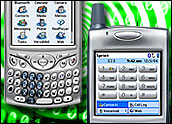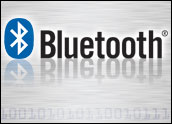
New applications keep converging with cell phone technology — and the latest, hottest combination seems to be “Flash-enabled” phones.
Research by the Boston-based consultancy, Strategy Analytics, forecasts that there are 38 million flash-enabled mobile phone handsets today, but that number is going to grow to 216 million by 2010. The firm reports that during the last two years, growth has been in the “triple digits” realm for the phones which have Adobe “FlashLite” and “FlashPlayer” technology, enabling the creation of more intuitive, wireless applications, and easier mobile Web surfing.
“Over 100 handsets that support FlashLite are already available or pre-announced,” said Stephen Entwistle, vice president of the strategic technologies practice at Strategy Analytics. “The top seven handset manufacturers and several others have signed up with Adobe to license FlashLite on their handsets.”
Macromedia — acquired by Adobe last year– redesigned its famous PC-based Flash technology for use on cell phones and other portable devices in 2003, said Stuart Robinson, director of the Strategy Analytics handset component technologies service. “Demand has taken off,” he added.
Japanese First
Japan’s NTT DoCoMo offered the first FlashLite-enabled handsets. “They are now available on numerous wireless networks in the Far East, with plans to spread worldwide this year,” said Robinson, co-author of the study, “Flash-Enabled Handset Forecast: Flash Lite Ready for Global Penetration.”
The FlashLite 2 and FlashPlayer SDK 7 technologies are the latest in the line of developments which are enabling Original Equipment Manufacturers (OEMs), consumer electronics device manufacturers and operators to provide customizable user interfaces, while delivering more consistent consumer experiences across devices, operating systems, processors and even screen sizes. The technologies are built on the ubiquitous Flash Player 7, and include ActionScript 2 support, Unicode support for international markets, tighter device integration, persistent data management, reduced memory consumption and improved XML data handling.
“Flexible user interfaces are a key differentiator and a significant part of the value creation on devices,” said John Jackson, senior analyst at Yankee Group.
Jackson said the technologies open the mobile market to a broader base of content and prolific developers. “This UI [User Interface] and application layer offers enhanced potential for competitive differentiation, compelling branding and personalization options for operators, content providers and device manufacturers alike,” said Jackson.
Adobe said a number of the world’s biggest electronics manufacturers are currently shipping Flash technology-enabled mobile phones and consumer electronics devices, including Nokia, Samsung, Sony Ericsson, Kodak, Reigncom and more.
Shipments of mobile devices running Flash have more than tripled from 12 to 45 million units within the last twelve months, the company said.
Other Approaches
“Consumers worldwide demand engaging content and services on their devices … from mobile phones to cameras, televisions and more,” said Al Ramadan, senior vice president of mobile and device solutions at Adobe. These technologies, he added, help unlock the potential for mobile handset and consumer electronics manufacturers “to successfully deploy truly compelling digital experiences.”
The Flash technolgy is one approach to a persistent industry problem — of mobilizing Web applications.
“Most have tried to solve it by stuffing the entire application into the device. But the form factor and way people use mobile devices doesn’t map to the Web experience. There’s a huge disconnect and, as a result mobilizing enterprise applications hasn’t taken off as many of these companies hoped it would,” said Melissa Klein, a spokesperson for ClairMail, another developer of Web-based apps for the mobile market.
Rather than rev-up mobile phones, ClairMail cools them down, with a more practical approach, that focuses on the precise pieces of information people need to access, rather than concentrating on entire applications, she said.




















































